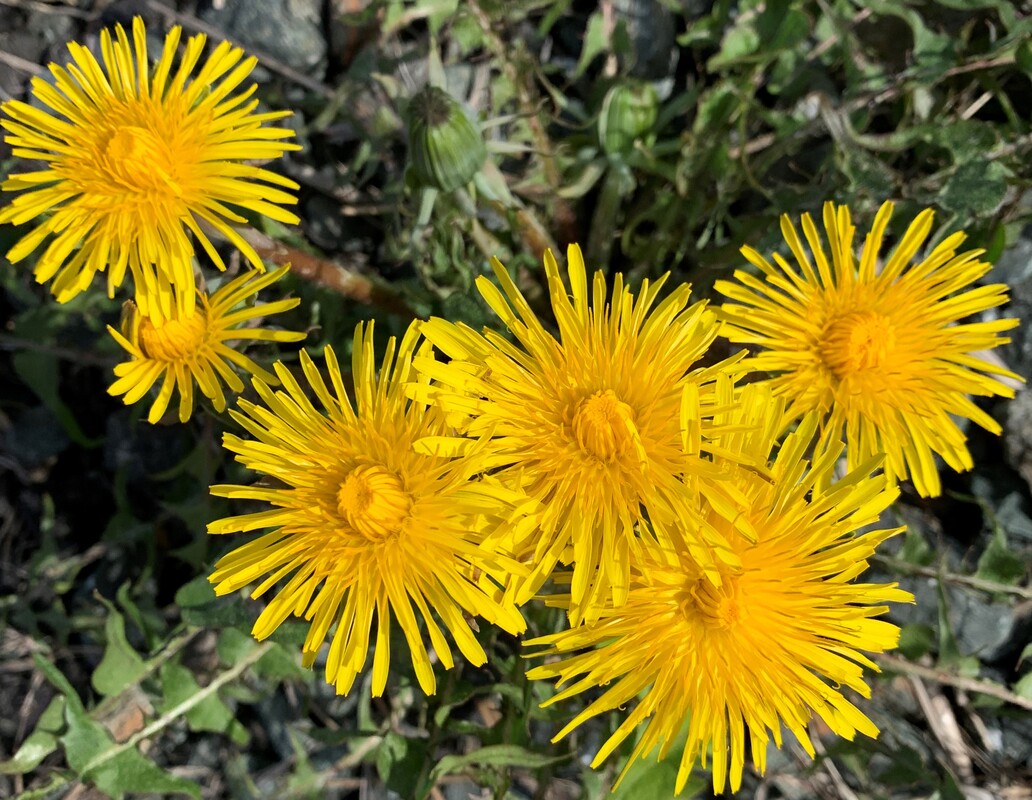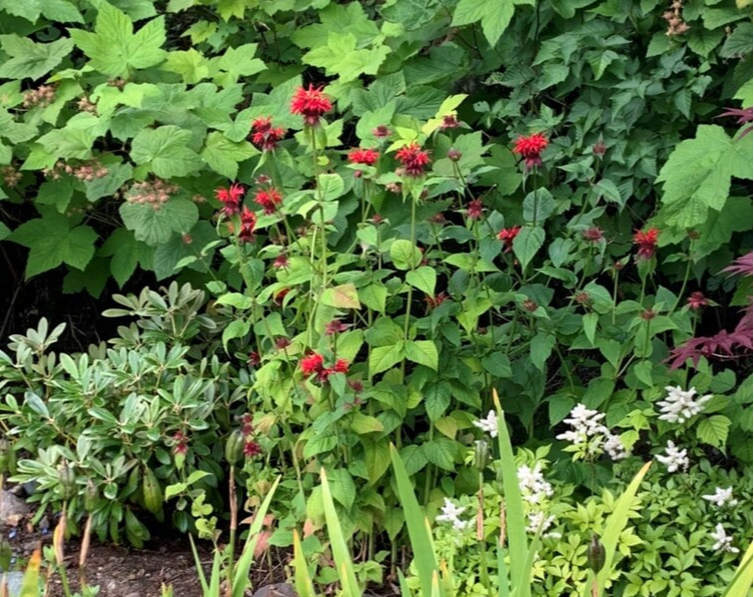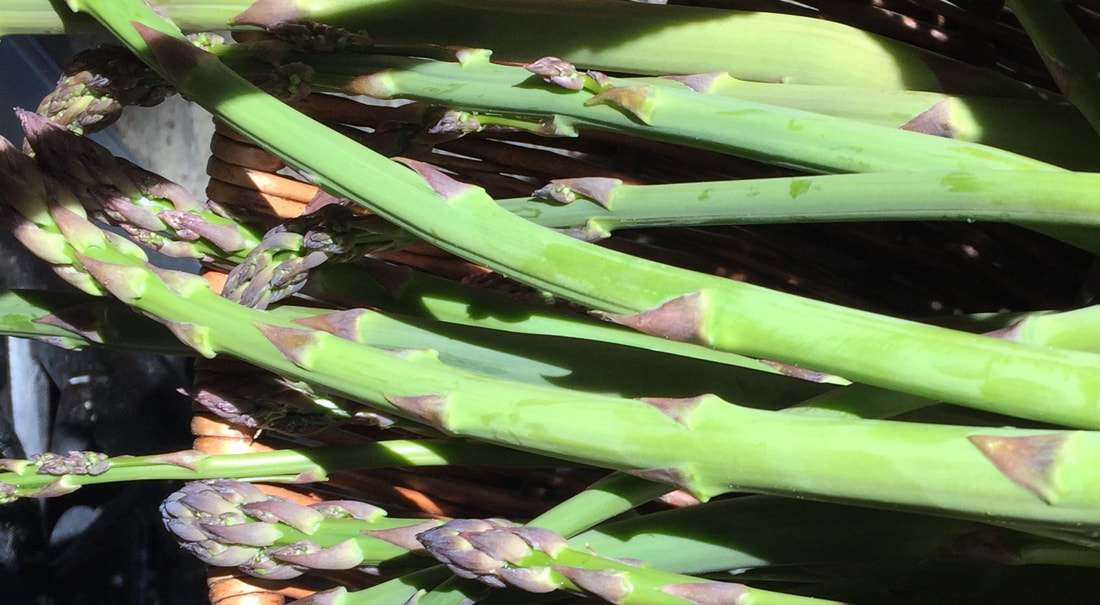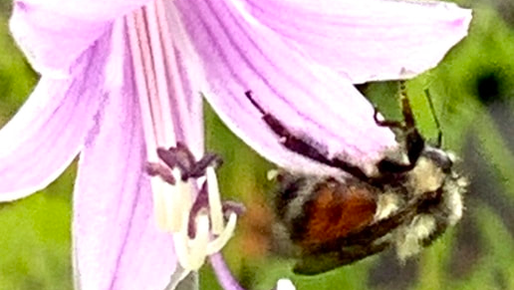UPDATED!
Lecture Topics
2025 American Primrose Society National Show
&
Alaska Master Gardeners State Conference
Lectures will take place in the Egan Classroom Wing at the University of Alaska Southeast
SEAKMGAFriday May 16, 2025 6:00 p.m. - 7:00 p.m., Lecture Hall 112 "Deterring Bears with Electric Fencing" By Isabel Grant How to build effective electric fences and pay for materials with Defenders of Wildlife’s Electric Fence Incentive Programs. 6:00 p.m. - 7:00 p.m, Room 224 "Ornamental Invasive Plants, and Ones To Watch." By Gino Graziano This talk will discuss how non-native plants are assessed for invasive potential, highlighting those that had been used as landscape plants. Some species though are showing some tendencies to spread, and are not yet considered invasive because of a lack of further evidence. We will discuss these species to watch. To web resources, the Alaska Exotic Plants Information Clearinghouse, and Landscape Plants for Alaska, can help you identify landscape plants we know are invasive, those that are being watched for invasive tendencies, and non-invasive alternatives. 7:00 p.m. - 8:30 p.m., Keynote Speaker, Lecture Hall 112 "Making Organic Compost" By Charles Dowding Somerset, SW England Making compost can be done in so many ways. From small to large, in open heaps or enclosed bays. Results always very which makes it fascinating! The most important thing is not to set the bar too high on what you hope to achieve. I see many gardeners disappointed with what looks to me a decent compost they have made. With no dig especially, a little undecomposed wood in the compost mulch is great food for microbes, and does not compete for nitrogen with plant roots. I explain the difference between hot and cold composting, how long it can take, and how to avoid having too many weed seeds. I show also my way of running a wormery, principally for use in the potting mix. www.charlesdowding.co.uk/resources/compost Saturday May 17, 2025 9:30 am - 11:00 a.m. Keynote Speaker, Lecture Hall 112 "No Dig Gardening" By Charles Dowding Somerset, SW England This presentation starts with an introduction to no dig. The broad principles, to illustrate how this method saves both your time and effort, together with enhancing soils’ ecology and health. I show slides of my garden, to illustrate different aspects of no dig, and good gardening. Through all four seasons. I explain starting out even with difficult perennial weeds, on any soil. I illustrate different methods of initial mulching, to smother weeds at the same time as enriching soil. These include using cardboard with compost on top, and black plastic with compost underneath. Compost can be of many types and does not need to be perfect in texture. I explain how it is not fertiliser, and what it adds to the soil and garden. I show examples of how to make best possible harvests in all seasons. I explain harvesting methods, winter vegetables, propagation, and seed saving. www.charlesdowding.co.uk/resources/beginners-guide 11:00 a.m. - 12:00 a.m., Lecture Hall 112 "Bringing the Farm Inside" by John Krapek Co-owner Juneau Greens Climate controlled environment hydroponics as a way to produce food year round. www.juneaugreens.com/ 11:00 a.m. - 12:00 Room 224 "AgrAbility" By Darren Snyder UAF Cooperative Extension Service Agent, Associate Professor Juneau Alaska 3:00 p.m. - 4:00 p.m. Lecture Hall 112 "Weather Patterns in Southeast Alaska: Large Scale Weather To Localized Impacts On Your Garden." By Nick Morgan, Senior Meteorologist, National Weather Service Juneau Alaska This talk offers a big-picture look at the weather patterns that affect Southeast Alaska. We’ll cover large-scale systems like El Niño and La Niña and how they influence local conditions such as frost timing, rainfall, and soil moisture. The presentation will also touch on the variability of microclimates across the Southeast Alaska region and how its weather has shifted over the past several decades. The goal of this talk is to give gardeners the tools and context they need to plan ahead for the growing season. 4:00 p.m. - 5:00 p.m. Lecture Hall 112 "Planning for Pests and Beneficials" By Jozef (Joey) Slowik Integrated Pest Management Technician, Matanuska Experiment Farm, Palmer Alaska After recapping some major garden pests for Alaska this talk will go over some productive cultural controls to help keep those pests at bay. It will also cover some practices which encourage beneficials but not the pests. And yes, it will cover slugs. 5:00 p.m. - 6:00 p.m., Lecture Hall 112 Growing Seed Potatoes and Carrots In Haines By Scott Hansen Owner of Sunnyside Farms, Haines Alaska Our family farm's journey toward certified seed potato production in Southeast Alaska. Our story of planting, harvesting, storing and selling seed potatoes. SUNNYSIDE FARMS of Haines is a family farm, operating on two leased parcels. We have grown potatoes and carrots commercially for seven years on an old orchard operated by the historic figure Charlie Anway. In 2022 and 2023 we pioneered three acres of post-glacial isostatically rebounding flats and planted “generation zero” potatoes. 2025 is our first year selling this potato seed. As we discover what the market can support, we expect to adjust our production, so as to be a regular certified seed potato and commercial carrot producer for the region. www.sunnysidefarmsofhaines.com/ 5:00 p.m. - 6:00 p.m., Room 224 "From Gardening to Slouching" By Dr. Birger Baastrup DC,CCSP Juneau Alaska Understanding posture and good ergonomics in the garden. citycenterchiro.com/
|
APS
Saturday May 17, 2025
9:45-1045 a.m. Room 223 “Primula in a Maritime Climate: A view of Primula growing from Anchorage, AK to Seattle, WA with a focus on varieties found in the Nationally Accredited™ collection at the Jensen-Olson Arboretum” By Ginger Hudson Primula, commonly known as primroses, grow in many environments, from wet meadows and stream-sides to rocky alpine scree. In 2012, the Jensen-Olson Arboretum was awarded accreditation for its impressive variety of Primula onsite. Over the years, JOA and Southeast Alaska gardeners have learned a thing or two about growing these cute plants as the climate changes, and regarding environmental conditions a temperate rainforest presents. This presentation will take viewers on a lovely primrose tour and touch on growing conditions along the north Pacific coast. 11:00 a.m. - 12:00, Room 223 “Elizabethan Primroses and Other Oddities: The Anomalous Types.” By Dean Wiegert Hose-in-hose, Jack-in-the-Green, Jackanape, these are the names of primrose variants that have been treasured by gardeners and collectors since at least the end of the 16th century. Modern growers have succeeded in rediscovering these plants along with other new variants like the oakleaf types. The American Primrose Society (APS) invites you to a discussion of these anomalous Primula variants with Dean Wiegert. We will look at the different forms and what makes these plants so special, interesting and fun to grow. Dean will share the results of his own breeding experiments and give tips on how to grow them for yourself. 1:00 p.m. - 2:50 p.m. Keynote Speaker, Room 112 “Nature and Health: Through design we can make spaces we want for healing, recovery, exercise, sustenance, and pleasure.” By Amy Wagenfeld, PhD, OTR/L, SCEM, FAOTA Gardens can be therapeutic. Amy’s topic can help you find ways to access yours as conditions change. Thoughtful design thinking allows us to create therapeutic, outdoor spaces that support physical and mental health and wellness and bring joy into our lives. During this presentation, you will learn about why being in nature and gardening is so important for your health and wellbeing and strategies to increase your nature “quotient.” 3:00 p.m. - 3:50 p.m., Room 223 “Primula Breeding for Fun and Profit” By Ed Buyarski Owner, Ed's Edible Landscaping, Juneau Alaska This presentation will focus on breeding new Primula plants for better color, stronger stems, larger flowers or perhaps resistance to pests or disease. Choosing parents for crossing from within a Primula Section is essential to ensure successful crosses. Techniques for crossing, selecting from the new seedlings, growing on to maturity and naming the progeny will be discussed. Patience, persistence, and record keeping are needed! 3:00 p.m. - 3:50 p.m., Room 225 “Alpine Gardens: Primula & Companion Plants for Crevice, Rock, and Container Gardens” By Daniel Hendrikson Plant enthusiast Daniel Hendrikson has developed practical knowledge and experience by growing and cultivating his own plants for well over 25 years. He will inspire us with his suggestions for garden-worthy primula and primula companions for rock, crevice and container gardens. Daniel will introduce you to a variety of primula and alpine plants and will include planting ideas and practical information for incorporating them into gardens and containers. In addition to recommendations for soil amendments, Daniel’s presentation will also include a resource guide for nurseries, plants, and planting materials. 4:00 p.m. - 4:50 p.m., Room 223 “Primula through the Seasons” By Paul Dick Juneau Alaska This local master Gardener has an affinity toward primula that grow perennially in Juneau’s rain forest. He has been gardening in Juneau for over 35 years and has cultivated several primula that span across his expansive garden. Paul has mastered incorporating different species of primula in his gardens that bloom in succession from April through /September. Paul’s collection of primula includes several varieties of P. juliaes he has collected from Juneau gardeners over his years of gardening. Attend this exciting presentation to see what Primula you might want to add to your collections. 4:00 p.m.- 4:50 p.m., Room 225 “Hostas - History, Usage and Amazing Variety for your Garden” By Rodney Mitchell Juneau Alaska With over 7100 registered varieties, hostas are considered the most widely grown ornamental perennial. Hardy to zone 3 and shade loving, they tolerate Juneau, Alaska’s often cold, cloudy days. | ||||||
| |||




